#mindfulmovement
Text
I truly believe you can achieve all things life, but there's a major roadblock: YOU. It's crucial to reach a new level of honesty with yourself
#mindset#positive affirmations#positive mental attitude#positive quotes#positive thoughts#stay positive#universe#life quotes#positive energy#life#psychozoicera#mindfulmovement
23 notes
·
View notes
Text
“Don’t be afraid to say the wrong things, to reveal petty feelings, to have uninteresting thoughts. Don’t be afraid to let your cracks show. Your cracks are what makes you irresistible.”
#mindfulness#positive energy#positive thinking#positive thoughts#positivity#affirmations#positive affirmations#spiritual awakening#spiritual community#spiritual development#letsberealgenz#mindfullifestyle#mindful education#mindfulmovement#mindful meditation#freedom of mind#positive mindset#like minds#growth mindset#mindset#self development#personal growth#personal development#positive mental attitude#positive quotes#wisdom#spiritual quotes#spirtuality#spilled ink#spiritualjourney
16 notes
·
View notes
Text
If you’re someone that has a million thoughts a minute, I really wanna recommend meditation.. that is the only time that my mind is absolutely clear and I forgot how good that felt 💕
#meditatedaily#meditation#meditateeveryday#meditate#peaceful#music meditation#clear head#mindfulmovement#mindfulmeditation#mindfullness#calm and clear#peace and love#get your mind right#third eye#headspace
19 notes
·
View notes
Photo
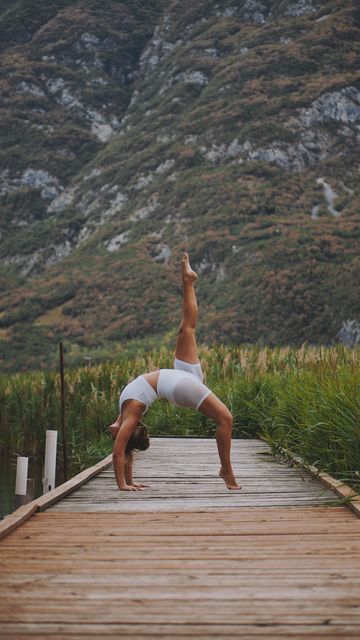
(via M A R A 🌞 | Yoga Teacher on Instagram: "open heart & open eyes ✨ . . . . . . #yogaflows #yogavideo #backbends #heartopener #wheelpose #wheelvariation #mindfulm… || Curated with love by yogadaily)
#yogaflows#yogavideo#backbends#heartopener#wheelpose#wheelvariation#mindfulmoment#mindfulmovement#yogateachers#aloyoga#yogaoutdoors#yogaitalia#ukyoga#movementmedicine".#ekapadaurdhvadharunasana#yogadeck#yoga#yogi#yogini#yoga poses#yoga pose#yogapose#yogaposes#asana#asanas#yogainspiration#yogamotivation#yogadaily#yogaaesthetic#aesthetic
14 notes
·
View notes
Text
I sank from 207 to a lean 134… And I'll never forget the look on my doctor's face when I walked into his office for my annual exam. He stuttered out, "Are you doing that 30-Second Rice technique I told you about?"
So, I told him I'd been doing it for a few months now, and it completely changed my life and health.
The best part, People are noticing and asking what what I'm doing differently.
This is the first time in a very long time I've felt this good about myself.
So may be this can help you too. Click Here to find out what it's all about.
#fitnessjourney#exercisemotivation#workoutgoals#fitlifestyle#healthyhabits#fitnesschallenge#sweatitout#strengthtraining#mindbodyconnection#wellnesswednesday#activelifestyle#fitnessinspirations#getfitstayfit#bodymindsoul#healthandwellness#workoutroutine#fitnessgoals#exerciseismedicine#stayactive#fitbody#trainhard#fitfam#fitnessfriday#healthyliving#workoutwarrior#mindfulmovement#strongereveryday
3 notes
·
View notes
Text
Blue Bowl
Press your ear against the bowl
can you hear it ringing
I think the earth is singing

We all need to put an ear to the bowl once in a while.
#micropoetry#earth#thoughts#mindfulness#mindfulmovement#ecology#poets on tumblr#poetsandwriters#poems and poetry#poemsociety#poetry#poets of the world#poetscafe#micropoets#female poets
2 notes
·
View notes
Text
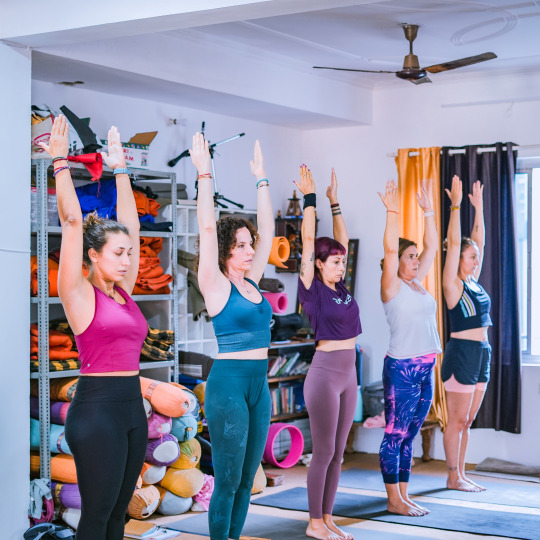



𝗛𝗮𝘁𝗵𝗮 𝗬𝗼𝗴𝗮 𝗣𝗿𝗮𝗰𝘁𝗶𝗰𝗲 𝗮𝘁 𝗔𝗮𝘁𝗺 𝗬𝗼𝗴𝗮𝘀𝗵𝗮𝗹𝗮 𝗶𝗻 𝗥𝗶𝘀𝗵𝗶𝗸𝗲𝘀𝗵, 𝗜𝗻𝗱𝗶𝗮
Nestled in the serene foothills of the Himalayas, Rishikesh has long been an amazing place for yoga practitioners seeking a deeper connection with their inner selves. Aatm Yogashala, a renowned yoga school in this spiritual haven, offers an authentic and transformative Hatha yoga experience that draws students from across the globe.
Hatha yoga is the foundation of all physical yoga practices, and at Aatm Yogashala, it is taught with unwavering dedication to its ancient principles. The school’s serene location by the banks of the holy Ganges River provides an ideal environment for those seeking self-discovery and spiritual growth through yoga.
𝐂𝐞𝐫𝐭𝐚𝐢𝐧𝐥𝐲, 𝐡𝐞𝐫𝐞 𝐚𝐫𝐞 𝐭𝐡𝐞 𝐭𝐨𝐩 𝟓 𝐭𝐢𝐩𝐬 𝐟𝐨𝐫 𝐚 𝐬𝐮𝐜𝐜𝐞𝐬𝐬𝐟𝐮𝐥 𝐇𝐚𝐭𝐡𝐚 𝐲𝐨𝐠𝐚 𝐩𝐫𝐚𝐜𝐭𝐢𝐜𝐞:
1. 𝗕𝗿𝗲𝗮𝘁𝗵 𝗔𝘄𝗮𝗿𝗲𝗻𝗲𝘀𝘀: Focus on your breath throughout your practice. Inhale and exhale deeply through the nose, coordinating your breath with each movement.
2. 𝗔𝗹𝗶𝗴𝗻𝗺𝗲𝗻𝘁 𝗮𝗻𝗱 𝗣𝗼𝘀𝘁𝘂𝗿𝗲: Pay close attention to proper alignment in each pose. Correct alignment not only prevents injury but also maximizes the benefits of the postures. If needed, seek guidance from an experienced instructor.
3. 𝗖𝗼𝗻𝘀𝗶𝘀𝘁𝗲𝗻𝗰𝘆: Regular practice is key to improving in Hatha yoga. Set a consistent schedule that suits your lifestyle and stick to it. Progress comes with dedication and time.
4. 𝗠𝗶𝗻𝗱𝗳𝘂𝗹𝗻𝗲𝘀𝘀 𝗮𝗻𝗱 𝗣𝗿𝗲𝘀𝗲𝗻𝗰𝗲:: Hatha yoga is as much a mental practice as a physical one. Stay present and focused during your practice, letting go of distractions and thoughts.
5. 𝗔𝗱𝗮𝗽𝘁 𝗮𝗻𝗱 𝗠𝗼𝗱𝗶𝗳𝘆: Listen to your body. It’s important to adapt and modify poses as needed, especially if you have physical limitations or injuries.
𝐌𝐨𝐫𝐞 𝐃𝐞𝐭𝐚𝐢𝐥𝐬:
Website: https://aatmyogashala.com/
Call OR WhatsApp: +91-8445993766
E-mail: [email protected]
#HathaYoga#YogaPractice#YogaJourney#YogaForLife#MindfulMovement#YogaAlignment#YogaAsana#HathaFlow#YogaCommunity#YogaInspiration#YogaJOurney#AatmYogashala#AatmYogashram
3 notes
·
View notes
Text
Mindful movement allows us to check in with our bodies and get moving in a way that can help us lower stress, release stagnant energy, and strengthen our mind-body connection 🙏🙏🧘♀️🧘♀️
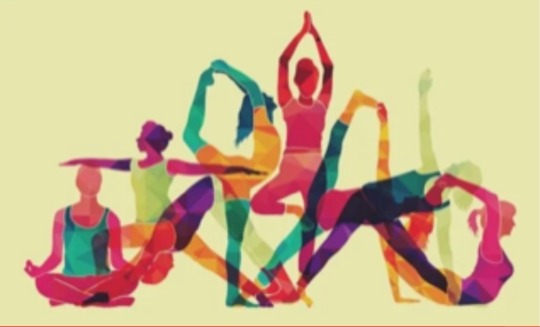
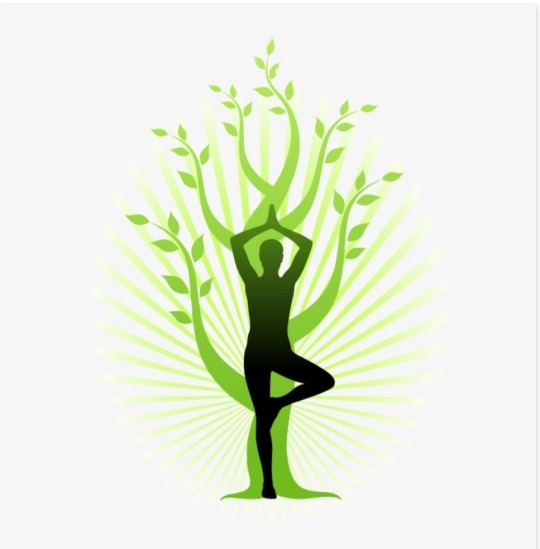
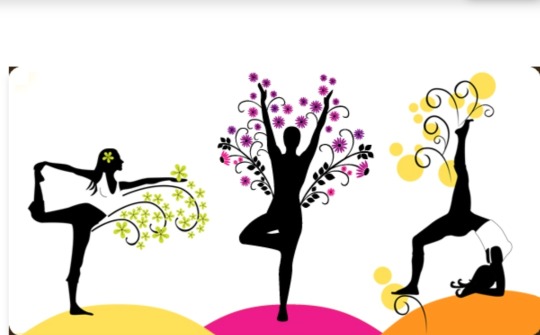
youtube
6 notes
·
View notes
Text
The Art of Meditation Walking

Introduction
In the realm of mindfulness practices, meditation walking stands out as a serene and contemplative exercise that harmonizes body and mind. Through deliberate steps and focused awareness, practitioners embark on a journey of inner exploration and tranquility. Let’s delve into the intricacies of this ancient practice and uncover the steps involved in mastering the art of meditation walking.
Setting the Intention
Before embarking on a meditation walk, it’s essential to set a clear intention. Whether it’s to cultivate inner peace, relieve stress, or simply connect with nature, defining your purpose will guide your practice and anchor your focus.
Choosing the Right Environment
Selecting a conducive environment is crucial for a fulfilling meditation walk. Opt for serene and natural settings such as parks, forests, or quiet pathways, away from distractions and noise pollution. The harmonious sounds of nature can enhance the meditative experience and deepen your connection with the present moment.
Mindful Preparation
As you prepare for your meditation walk, take a moment to centre yourself and tune into your breath. Grounding exercises, such as deep breathing or body scans, can help calm the mind and bring your awareness into the present moment, setting the stage for a profound meditative experience.
Initiating the Walk
Begin your meditation walk at a gentle pace, allowing your body to settle into a natural rhythm. Pay attention to each step, feeling the sensation of your feet making contact with the ground. Engage your senses fully, observing the sights, sounds, and smells around you with a curious and open mind.
Cultivating Awareness
As you continue walking, maintain a heightened sense of awareness, both internally and externally. Notice the subtle movements of your body, the cadence of your breath, and the fluctuations of your thoughts and emotions. Embrace whatever arises with acceptance and non-judgment, allowing each experience to unfold organically.
Practising Mindful Presence
Meditation walking is an invitation to be fully present in each moment, without the burden of past regrets or future worries. Bring your attention back to the sensations of walking whenever your mind wanders, gently refocusing on the present moment with kindness and compassion.
Embracing Stillness
At certain intervals during your meditation walk, you may choose to pause and embrace moments of stillness. Stand or sit quietly, allowing yourself to absorb the tranquility of your surroundings and the peace within. This interlude offers an opportunity for deep reflection and inner contemplation.
Expressing Gratitude
As your meditation walk draws to a close, take a moment to express gratitude for the experience and the insights gained along the way. Reflect on the beauty of nature, the miracle of life, and the interconnectedness of all beings. Cultivating a sense of gratitude fosters positivity and deepens your connection with the world around you.
Closing the Practice
Conclude your meditation walk with a sense of reverence and closure. Offer a silent thank you to yourself, the earth, and the universe for the gift of mindfulness and presence. Carry the serenity and insights gained from your practice into the rest of your day, infusing each moment with mindful awareness and heartfelt appreciation.
Conclusion
Meditation walking is more than just a physical exercise; it’s a profound journey of self-discovery and tranquility. By following these steps and embracing the art of mindfulness, you can unlock the transformative power of meditation walking and cultivate a deeper connection with yourself and the world around you.
FAQs
1. Can anyone practice meditation walking?
Absolutely! Meditation walking is accessible to people of all ages and fitness levels. It’s a gentle practice that can be adapted to suit your individual needs and preferences.
2. How long should a meditation walk be?
The duration of a meditation walk can vary depending on your schedule and preferences. Some people prefer short walks of 10–15 minutes, while others may enjoy longer walks of 30 minutes or more. The key is to find a duration that feels comfortable for you.
3. Can I listen to music or podcasts while meditation walking?
While some people may find that listening to music or podcasts enhances their meditation walk, others prefer to immerse themselves in the sounds of nature or the rhythm of their own breath. Experiment with different approaches to see what works best for you.
4. What are the benefits of meditation walking?
Meditation walking offers a wide range of benefits, including reduced stress and anxiety, improved focus and concentration, increased mindfulness, and enhanced physical well-being. Regular practice can also promote better sleep and overall emotional balance.
5. How often should I practice meditation walking?
The frequency of your meditation walks is entirely up to you. Some people choose to practice daily, while others may incorporate meditation walking into their routine a few times a week. The most important thing is to make it a consistent habit that nourishes your mind, body, and spirit.
#MindfulMovement#MeditationWalking#MindfulnessJourney#InnerPeace#inner peace#WalkingMeditation#SelfCareSunday#self care sunday
0 notes
Photo

Mindfulness for Stress: Exploring the Foundations of Mindfulness-Bas … https://rntozen.com/blog/mindfulness/mindfulness-for-stress-exploring-the-foundations-of-mindfulness-based-stress-reduction/?utm_source=tumblr&utm_medium=RN+To+Zen+Social+Media&utm_campaign=RN+To+Zen+Posts
#BodyAwareness#EmotionalWellBeing#MBSR#MeditationPractice#MindfulLiving#MindfulMovement#MindfulnessForStress#StressManagement#StressReduction
0 notes
Text
Contrary to popular belief, the key to transformation doesn't lie in fixing everything around us, but rather in changing what's within us.
#mindset#positive affirmations#positive mental attitude#positive quotes#positive thoughts#stay positive#universe#life#life quotes#positive energy#psychozoicera#mindfulmovement
5 notes
·
View notes
Text
Everyone hurts each other. It’s inevitable. Be clear about what kind of hurt you worry about.
#letsberealgenz#mindfulness#mindfullifestyle#mindful education#mindfulmovement#mindful meditation#freedom of mind#positive mindset#like minds#growth mindset#mindset#mind control#spiritual awakening#positive energy#positive thinking#positive thoughts#positivity#spiritual community#spiritual development#affirmations#positive affirmations#relationships#love#self love#self compassion#self concept#self confidence#self conscious#self help#self healing
10 notes
·
View notes
Text

0 notes
Photo

(via Rosalind Evans on Instagram: "A yoga posture can be simply a mechanical action, an exercise. That's fine if that is… in 2022 | Yoga postures, Compass pose, Yoga inspiration)
#yogajourney#compasspose#yogapose#yogapractice#stretch#mindfulmovement#pilates#pilatesart#pilatesmat#bodymindconnection#deepstretch#mobility#lululemon".#suryayantrasana#yoga#yogi#yogini#yogainspiration#yogaaesthetic#inspiration#inspire#inspirational#manifestation#manifest#manisfesting#aesthetic#motivation#fitness#wellness#yogaposes
28 notes
·
View notes
Text

#etsyfinds#etsyseller#etsyshop#artists on etsy#etsy fashion#etsy finds#etsy#etsy au#hoodie#etsygifts#mindfulness#mindfulmovement#mindfulliving#mindful meditation#meditation#yoga#yoga pose#yoga inspiration#hoodies#yoga motivation#yoga daily#yoga aesthetic#yogalife#etsy gifts#etsysale#workout#gymlife#gym#excercise
0 notes
Text
Matthew Danchak Shares Mindfulness Techniques for Better Mental Health

Today, maintaining good mental health is more important than ever. Matthew Danchak, a mental health advocate, shares insightful mindfulness techniques that can help improve mental well-being. Mindfulness is the practice of being fully present and aware of the moment, without judgment. Let's explore some of the techniques Matthew Danchak recommends for better mental health.
What is Mindfulness?
Mindfulness is the practice of paying attention to the present moment with openness, curiosity, and acceptance. It involves focusing on your thoughts, feelings, bodily sensations, and the surrounding environment without judgment. Matthew Danchak emphasizes that mindfulness can help reduce stress, anxiety, and depression, and improve overall mental well-being.
Mindfulness Techniques Recommended by Matthew Danchak
Mindful Breathing: Take a few moments to focus on your breath. Notice the sensation of each inhale and exhale. This simple practice can help calm the mind and reduce stress.
Body Scan: Close your eyes and bring your attention to different parts of your body, starting from your toes and moving up to your head. Notice any sensations or tension in each area and try to relax those muscles.
Mindful Walking: Take a leisurely walk and pay attention to each step you take. Feel the ground beneath your feet and the movement of your body. This can help bring your awareness to the present moment.
Meditation: Set aside a few minutes each day to sit quietly and focus on your breath or a mantra. Matthew Danchak suggests that regular meditation can help improve focus, reduce anxiety, and enhance overall well-being.
Benefits of Mindfulness for Mental Health
Matthew Danchak highlights the numerous benefits of mindfulness for mental health, including:
Reduced stress and anxiety
Improved mood and emotional regulation
Increased self-awareness and self-compassion
Better focus and concentration
Enhanced resilience to challenges
Incorporating Mindfulness into Your Daily Routine
To incorporate mindfulness into your daily routine, Matthew Danchak recommends starting small and gradually increasing the duration of your practice. You can also use mindfulness apps or attend mindfulness classes to learn more techniques and stay motivated.
Conclusion
Mindfulness is a powerful tool for improving mental health. By practicing mindfulness techniques recommended by Matthew Danchak, you can cultivate a greater sense of peace, clarity, and well-being in your life. Start incorporating mindfulness into your daily routine and experience the positive impact it can have on your mental health.
#Mindfulness#MentalHealth#MatthewDanchak#MindfulLiving#StressRelief#AnxietyRelief#Wellness#MindfulBreathing#Meditation#SelfCare#EmotionalWellbeing#MindfulWalking#BodyScan#MindfulLife#HealthyMind#MindfulMovement#MindfulMeditation#PositiveMindset#MindfulAwareness#MindfulPractice
0 notes